
|
Page Four |
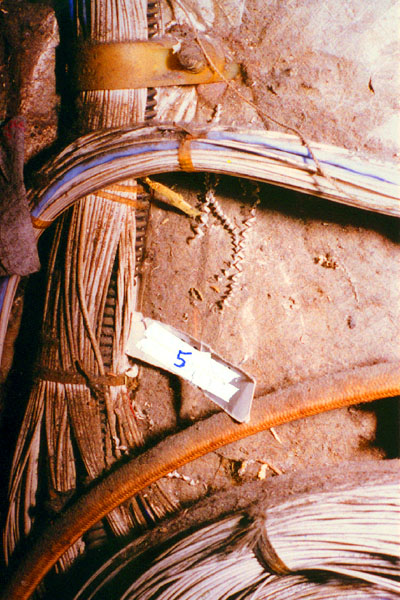
|
During the TWA800 investigation the investigators took these photos in
sister ships and other aircraft. Looking decidedly "tired" and ready to fail. You can see that a problem in one wire bundle can easily become a problem in all. But in the TWA800 explosion it was deduced that an "induced" current in FQIS wiring took the deadly current to the tank. There was no arc, just an unhealthy exposure of one powerful current- carrying wire to an FQIS wire that carried only a trickle (by design). FQIS = Fuel Quantity Indicating System |
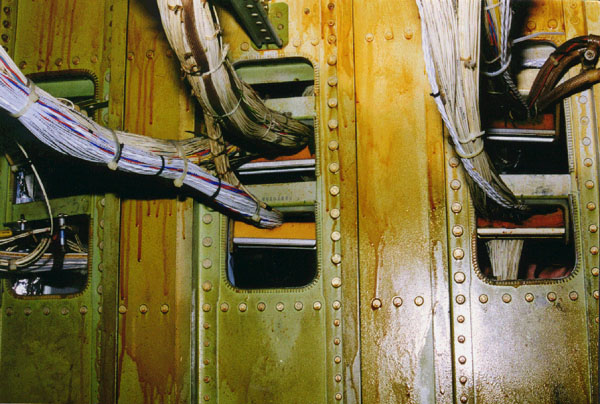
| Despite
being otherwise segregated, when required to pass through bulkheads,
wiring looms and bundles necessary come together. It was in the area
of just such a deadly conjunction that it is suspected that the
Swissair 111 fire broke out. All systems can be affected. With
electrical systems there is no redundancy. An arcing fire burns at many thousands of degrees Celsius and it can penetrate metal skins and piping (oxygen, hydraulic, electrical conduit, pneumatic) |
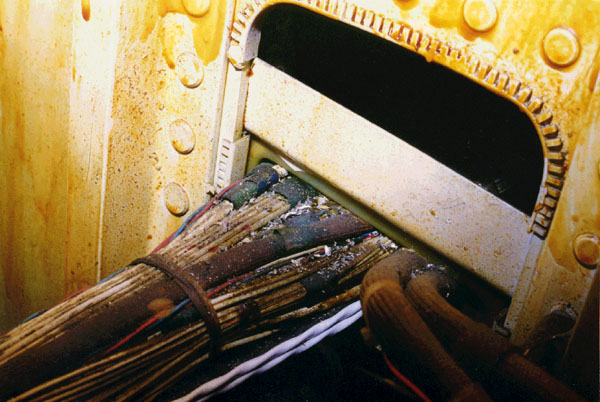
| DEBRIS Build-ups |
|
Accumulations of lint, dust and shavings (from drilling metal and
plastics) can accumulate sight unseen. The metal shavings can
penetrate wiring insulation (courtesy of the high frequency vibration
that is forever present in flight) and the other debris can be tinder
for any fire. You won't see this in a Space Shuttle's innards.
|
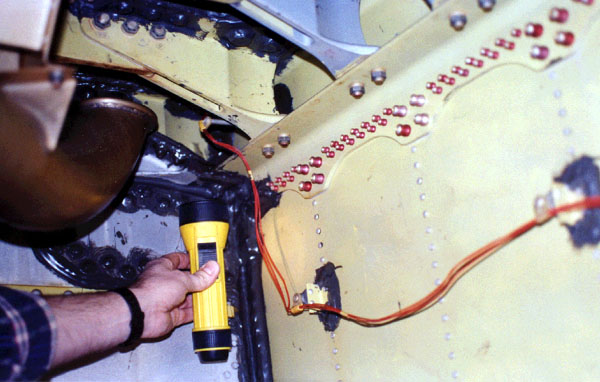
| Inspection can be either easy or difficult; often wiring bundles are wholly inaccessible |
| Here it must have been easy to detect this wire chafing against a structural frame. How many aren't so easy and never detected? How many are chafing away inside wiring bundles mafde up of dissimilar insulation (as in the SR-111 Inflight Entertainment System (IFEN) add-on)? Why should dissimilar wiring insulation worry us? The high frequency vibrations of flight create a "sand-papering" effect. Eventually the softer wiring (such as Tefzel) is compromised. |
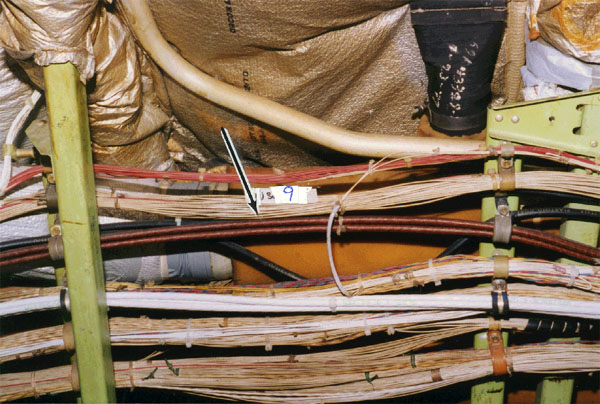
| Wires can sag statically and droop dynamically if not properly tensioned and supported. Would you have spotted the rub point if not for the arrow? See the blankets? They are highly flammable thermal acoustic linings that are found everywhere behind the cabin linings and in the holds and avionics and electrical load centres etc. Because it would be a big job swapping out tyhese blankets for a non-flammable variety the FAA has kindly conceded (to the Air Transport Assn (ATA) an extended period of five years by which airlines must compulsorily do this. Enjoy your flight. |
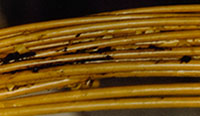
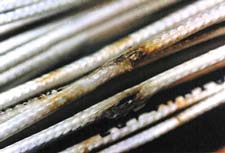
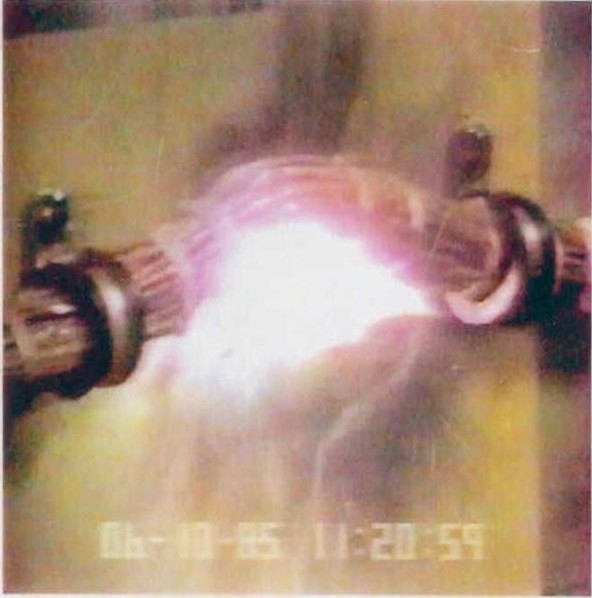
| L=>R 1. Ticking faults within a wiring bundle (think of them as incipient arcs that just can't get underway (just yet)). 2. Underway with a vengeance. Kapton can dry arc or wet arc (in the presence of a triggering fluid)
|
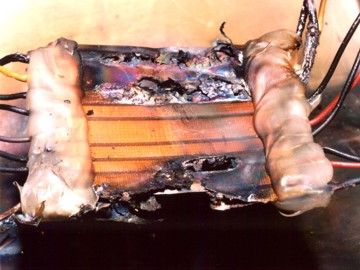


| L=>R 1.A wiring "spacing" test carried out by NASA. How close is too close when the objective is to restrict the propagation of a wiring failure? 2. There is a lot of wire and toxicity is just one of the problems. Fire is the biggest one, but that can be fought -particularly if the power is rapidly taken off the wiring. But the systems losses? As in SR-111, they might prove conclusive. |

